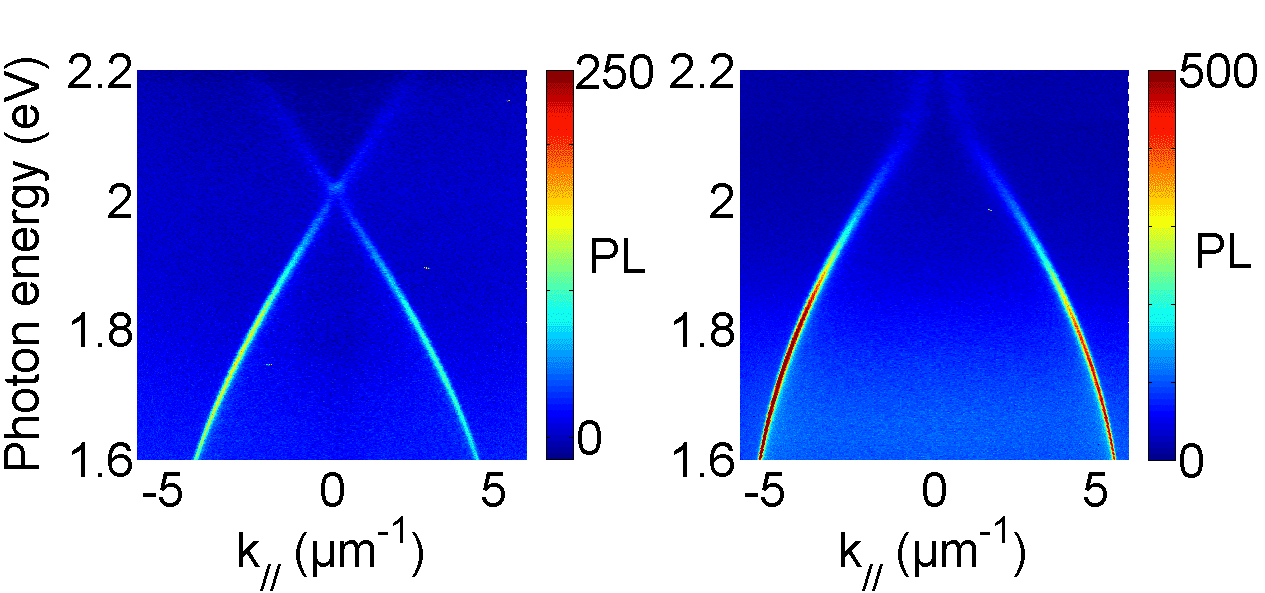
Controlling Quantum Dot Emission by Plasmonic Nanoarrays
We investigate control of the emission of quantum dots (QDs) coupled with silver nanoparticle arrays. Plasmonic nanoparticle arrays support collective Surface Lattice Resonances (SLRs) which are an ideal platform for tailoring the emission profiles of nanoscale emitters [1]. Furthermore, the coupling between excitons and the collective modes of nanoarrays also offers an approach to exploring quantum and coherence phenomena if the strong coupling regime is achieved [2-4].
In this work we fabricate silver nanoparticle arrays supporting SLRs modes. Colloidal QDs are then positioned on top of nanoparticles, ensuring a deterministic coupling between the emitters and plasmonic particles. Using a Fourier-space (k-space) measurement setup [3], we excite the sample with a laser and then collect the emitted light. We observe that the emission remarkably well follows the dispersion of the SLR modes (see Fig. 1). Thus by placing QDs in the near-field regions of nanoparticles, the collective modes of nanoarrays are coupled efficiently with the emission of QDs; the emitted light becomes directional, with an increased level of coherence. We will present a detailed analysis of the emission properties and decay rate measurements of the hybrid structures.

Fig 1. Observed emission of QDs coupled with plasmonic nanoarrays follows closely the SLR dispersions. The lattice periods are 400nm (left) and 365nm (right).
REFERENCES:
[1] S. R. K. Rodriguez, G. Lozano, M. A. Verschuuren, R. Gomes, K. Lambert, B. De Geyter, A. Hassinen, D. Van Thourhout, Z. Hens, and J. Gómez Rivas, Appl. Phys. Lett. 100, 111103 (2012).
[2] A. I. Väkeväinen, R. J. Moerland, H. T. Rekola, A.-P. Eskelinen, J.-P. Martikainen, D.-H. Kim, and P. Törmä, NanoLett., 14, 1721 (2014).
[3] L. Shi, T. K. Hakala, H. T. Rekola, J.-P. Martikainen, R. J. Moerland, and P. Törmä, Phys. Rev. Lett. 112, 153002 (2014).
[4] T. Schwartz, J. A. Hutchison, C. Genet, and T. W. Ebbesen, Phys. Rev. Lett. 106, 196405 (2011).
rui.guo@aalto.fi
Powered by Eventact EMS